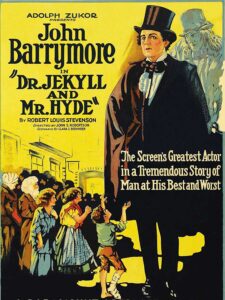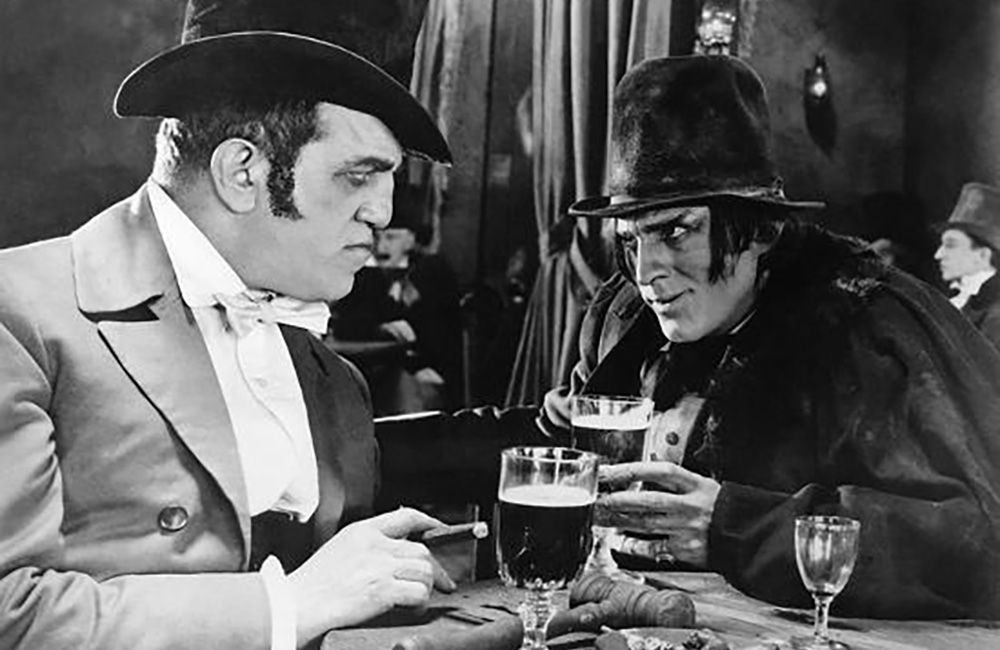Though the 1920 version is over 100 years old, it is still enjoyable, even chilling. In fact, its lack of human speech is its strength. Since the scriptwriters were limited to inter-titles to present text, they avoided the philosophical discourses and moral prolixity that weighed down later versions. The script is as lean as the original novella; it relies on John Barrymore’s face and body to tell us of Hyde’s depravity and Jekyll’s horror and shame.
Barrymore (grandfather of Drew Barrymore, in case you are interested) was a luminous comet blazing through the ether of the New York stage, along with his brother Lionel and sister Ethel. John Barrymore was as famous as he was mercurial. He enjoyed so much wine and so many women that he became a Byronic hero backstage, as well as onstage. On stage and in front of the camera he governed his temperament with the technique and discipline of a consummate thespian. His performance is made eternally fresh by the elasticity of his emotional expression and protean physical vocabulary.

Barrymore uses his ethereal beauty and exquisite profile to lift us up to the level of the angelic Dr. Jekyll. A man too soulful and too blindly pure to acknowledge and thereby control his baser nature. His self-loathing caused by his suppressed physical desires impels him to try to split off the lust, greed, and anger that lurk within. His denial ends up creating the exemplar of toxic masculinity—Mr. Hyde.
Barrymore’s every gesture and step have the cultivated spontaneity of a dancer. He is elegant as Jekyll and then his sudden transformation from Jekyll to Hyde has the percussive grace of a paroxystic ballet. He convulses into a human more and more disfigured by every evil act, like an inverse portrait of Dorian Gray.
John Barrymore’s Hollywood epithet was ‘The Great Profile’ as a result of his aquiline nose and noble forehead. Dr. Jekyll and Mrs. Hyde boasts another notable profile. Louis Wolheim, as the music hall proprietor, sports a nose often broken by too many fistfights. When he tried to have his nose surgically repaired the studio he was under contract to, United Artists filed a successful injunction to prevent it. Barrymore and Wolheim were very good friends. All the Barrymores met Wolheim in a play and were responsible for giving him his break in Hollywood. Seeing the two friends on screen together is a ‘Beauty and Beast’ experience.
The rest of the film is servable to frame Barrymore and Wolheim’s performances. Be sure to watch a restored version. The unrestored version is so damaged it looks like all the action takes place in a blizzard.
You can see Barrymore at the end of his career as a waggish troublemaker in “Midnight” (1939).


